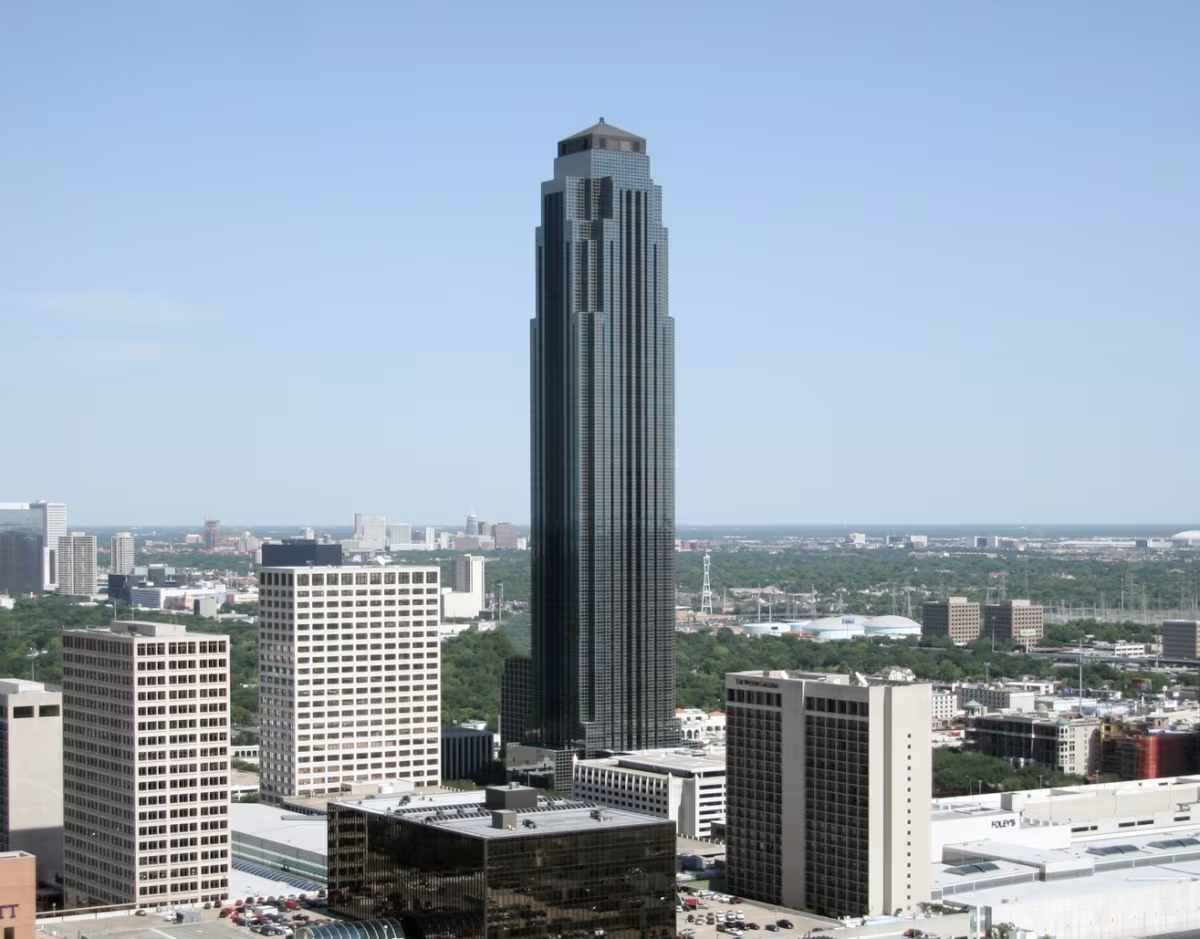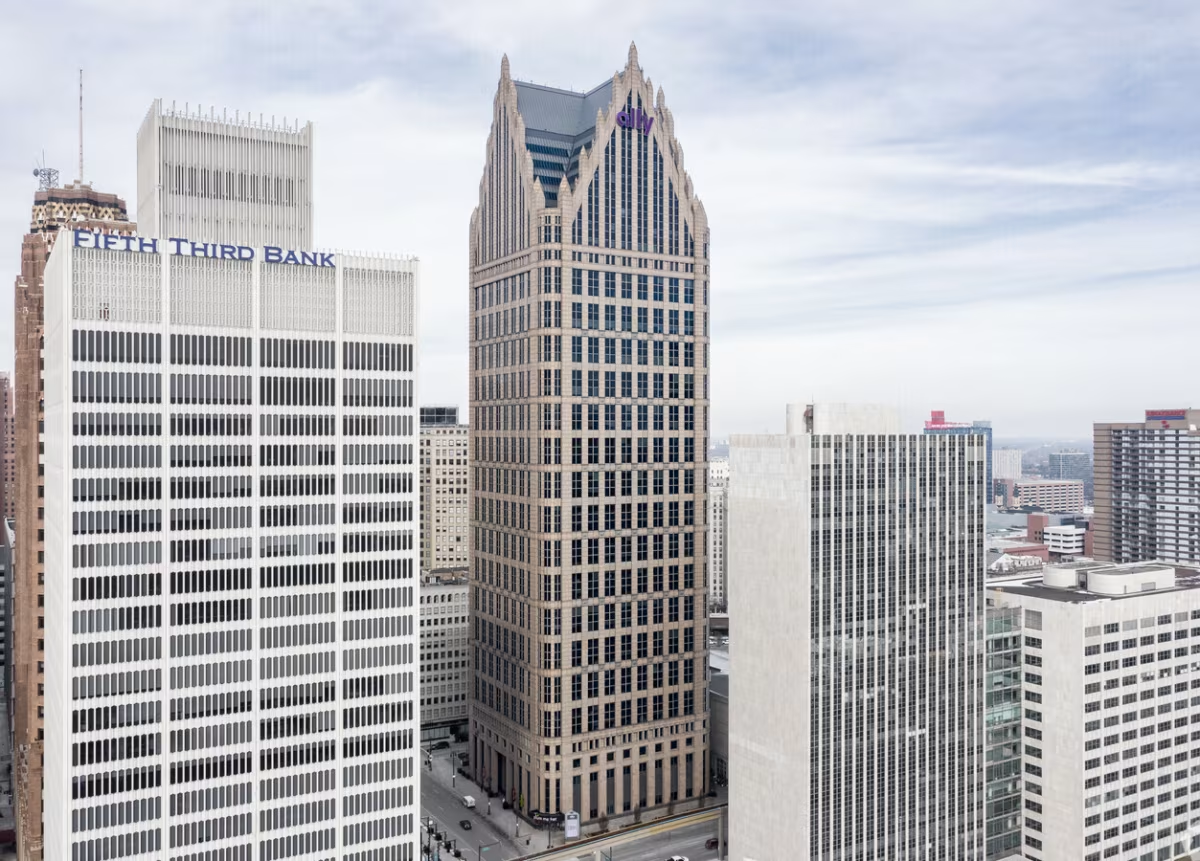Williams Tower vs Ally Detroit Center


Comparing the Williams Tower and the Ally Detroit Center is compelling because they were both designed by Johnson/Burgee Architects, yet they stand in different cities (Houston, TX and Detroit, MI), and were completed a decade apart.
What this will allow us to see, is how the same firm's approach adapted to different places at roughly the same time (10 years isn't that much time when it comes to urban context and architecture).
Height & Size
The Williams Tower is clearly the larger tower of the two, both in terms of height and number of floors. It rises to 902ft (275m) with 64 floors above ground, while the Ally Detroit Center reaches 607ft (185m) with 43 floors above ground.
Of course, each project may have faced different briefs or regulatory constraints, which we don't really know about and could also explain the outcome.
Architectural Style
Both the Williams Tower and the Ally Detroit Center were designed in line with the aesthetic conventions of the Postmodernism style.
The Ally Detroit Center was designed at a moment when the Postmodernism style was already in decline, making it more of a lingering expression of the movement. In contrast, the Williams Tower was built when the style still carried greater cultural weight.
Uses
Both the Williams Tower and the Ally Detroit Center are primarily commercial towers, serving similar roles in the urban fabric.
Both towers provide significant parking capacity, with Williams Tower offering 3280 spaces and the Ally Detroit Center offering 2070.
Structure & Facade
Both the Williams Tower and the Ally Detroit Center rely on a Frame structural system.
A frame structure uses a grid of columns and beams to carry the building's loads. This frees the walls from structural duties, allowing for flexible floor plans and larger windows.
They also employ the same type of facade, a Curtain Wall facade.
A curtain wall is a non-load-bearing facade hung from the structural frame. It is anchored to floor slabs and transfers only its own weight and wind loads, allowing for sleek, glassy exteriors.
| Williams Tower | Ally Detroit Center | |
|---|---|---|
| Johnson/Burgee Architects | Architect | Johnson/Burgee Architects |
| 1981 | Construction Started | 1991 |
| 1983 | Year Completed | 1993 |
| Postmodernism | Architectural Style | Postmodernism |
| Commercial | Current Use | Commercial |
| 64 | Floors Above Ground | 43 |
| 2 | Floors Below Ground | 2 |
| 275 m | Height (m) | 185 m |
| 49 | Number of Elevators | 22 |
| Frame | Structure Type | Frame |
| Steel | Vertical Structure Material | Steel |
| Concrete | Horizontal Structure Material | Steel And Concrete |
| Glass, Steel | Main Facade Material | Granite, Glass |
| J.A. Jones Construction Co. | Main Contractor | Walbridge Aldinger Company |
| Gerald D Hines Interests | Developer | Hines Interests Limited Partnership |
| TX | State | MI |
| Houston | City | Detroit |
| 2800 Post Oak Boulevard | Address | 500 Woodward Avenue |